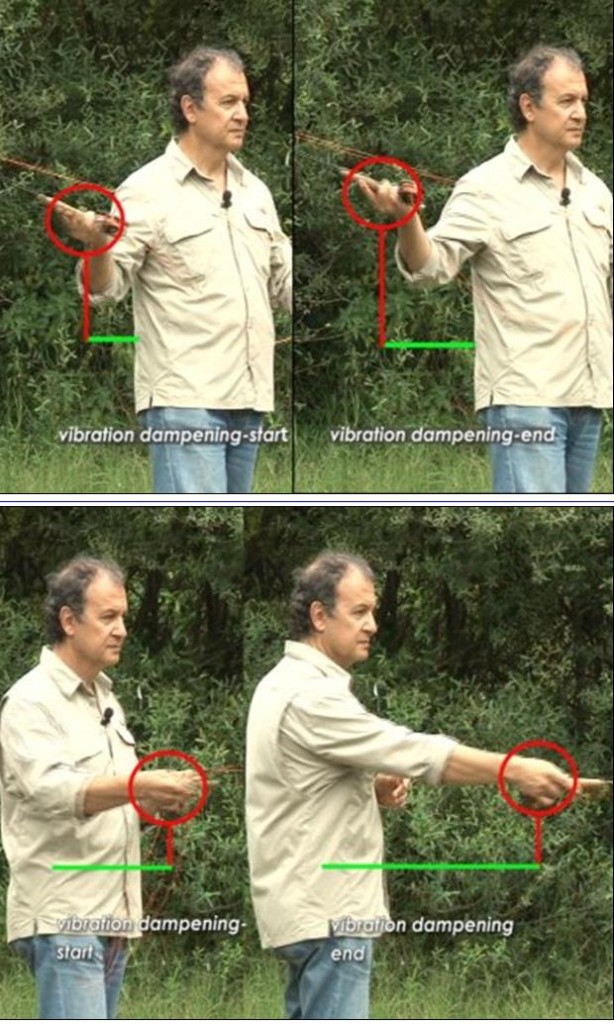
Casting is a harmonious gesture which should become spontaneous and without forcing too much. Using too much force is negative and to get things to work well you shouldn’t have any stops during the forward and backward casting movements.
The stops generate abrupt movements because after the stop and when you start again, you decrease the space for the acceleration and consequently you need to start from zero velocity again, that is very abruptly.Here is where another fundamental element of this casting technique that becomes essential to use and which is deeply connected to the formation of the loop and the casting space and this is the so called Vibration Dampening.
Vibration Dampening, as we will see, may seem like a secondary element but it is of fundamental importance in order avoid the Stop we mentioned earlier. It lets you start your stroke harmoniously so that the whole fluidity of the casting stroke is kept constant. A good progression is generated so that the Thrust takes place at the right moment and as far forward as possible.
After having executed the backward thrust and after having got the line forwards over the tip, we will continue moving the rod in the direction of the line waiting for it to be turned over. We shouldn’t wait for the line to be completely turned over because when the loop opens, there will not be any more energy in the line and it will start dropping. Remember that the height the line reached on the back cast must be higher or at most the same as the height reached by the rod tip. Once the backward vibration dampening has taken place for about 20 – 25 cm, the forward cast will start without stopping. Only the direction changes. This will not only increase the space in which the cast takes place, but will also prevent abrupt movements. The most important vibration dampening process is the one on the back cast because it can be defined as the beginning of the forward cast.